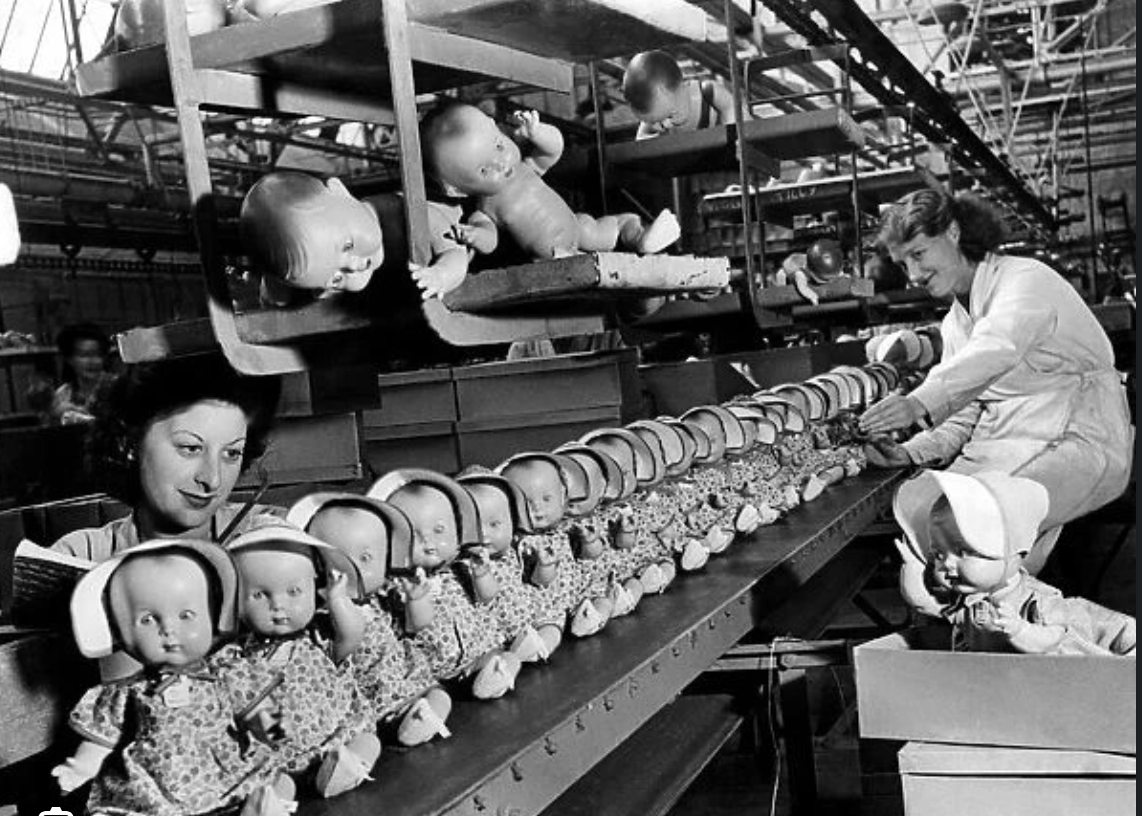
The commercialiaztion of the Baby Doll strenghtened domestic cultural values and consumer culture (Formanek-Brunell, 1993). With the shift to mass production from the late 19th Century on, dolls were more present in girlhood, and embodied traditional female roles. It evolved from homemade cloth dolls promoting values of virtue and usefulness, to mass-produced dolls that not only reflected advancements in technology and material, but reinforced family gender roles, such as the maternal role as nurterer and caregiver.

The doll industry also showed different roles of female and male entrepreneurs. Female entrepreneurs created dolls that encouraged nurturing, real-life scenario play, while male entrepreneurs preferred the dolls' profitability, which Formanek-Brunell (1933) critiques as too mechanical, hard, and less aligned produced dolls with children's needs. These ideas of female entrepreneurs were adapted by male entrepreneurs, however without the intent to promote more realistic and wholesome images of girlhood.
For instance, while female entrepreneurs aimed to create dolls that encouraged realistic care-giving scenarios with the dolls features, these concepts were adapted by male-led businesses, with the priority to market appeal and profitability over the educational goals (Formanek-Brunell, 1933). Thus, dolls that were meant to be empowering and educational tools were transformed into products that conformed to existing consumer patterns or reinforced stereotypical concepts of femininity and beauty.
This video shows how dolls were made during the shift to mass production. Source: British Pathé on YouTube, 2015